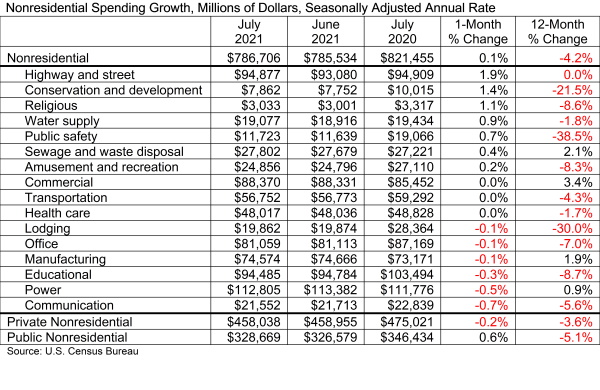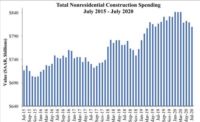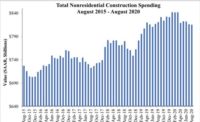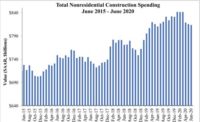National nonresidential construction spending expanded 0.1% in July, according to an Associated Builders and Contractors analysis of data published today by the U.S. Census Bureau. On a seasonally adjusted annualized basis, nonresidential spending totaled $786.7 billion for the month.
However, spending was down on a monthly basis in six of 16 nonresidential subcategories. Spending in three categories was virtually unchanged. Private nonresidential spending was down 0.2% for the month, while public nonresidential construction spending rose 0.6% in July. Total nonresidential construction spending is down 4.2% from July 2020.
“The nonresidential construction spending numbers are meaningfully worse than they initially appear,” said ABC Chief Economist Anirban Basu. “While the headline number suggests that nonresidential spending was effectively flat in July, the figure does not adjust for inflation. In real terms, the volume of construction services delivered by the nation’s nonresidential contractors declined in July.
“Higher materials prices and worsening skills shortages represent primary culprits,” said Basu. “Many project owners are delaying projects due to elevated construction service delivery costs. With COVID-19 continuing to wreak havoc on supply chains, materials prices and transportation costs are set to remain elevated well into 2022. The result is that the construction recovery is significantly slower than it would otherwise be, a fact reflected in the most recent reading from ABC’s Construction Backlog Indicator.
“Data indicate that public construction spending has been more negatively affected than private spending,” said Basu. “While overall nonresidential construction spending is down 4% on a year-over-year basis, public construction spending is down more than 5%. That said, there are some private segments that continue to exhibit weakness, due in part to behavioral shifts that have transpired during the public health crisis. Spending is down year over year in the lodging and office segments, and neither of these segments exhibited a rebirth of momentum in July.”





